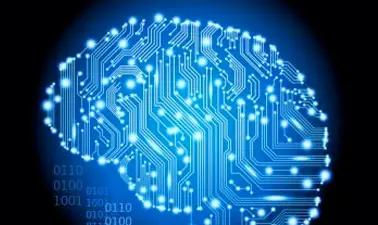There was a robot in news a few weeks ago that wanted to make humans, its pet. It could have been programmed to say so. Another news has a ‘frustrated’ robot killing a human at a car assembly line in Japan. We do not know for sure what is the progress in the field of Artificial Intelligence. We also do not know if it will be good or if Stephen Hawkings’ fears will come true. Irrespective of that, we need to know the buzzwords being used in the world of artificial intelligence so that we can study papers in the field and don’t get lost in the maze of terms. I have compiled a small but important list of terms used in Artificial Intelligence so that next time you read a paper on the subject, you don’t have to google for the words used in the paper.
Terms in Artificial Intelligence
AI: Artificial Intelligence; refers to the field of artificial intelligence in a broad sense Algorithm: You might have come across this word if you have been into programming. It refers to a set of instructions that get a task done. In artificial intelligence, Algorithm tells the machines how to figure out answers to different issues or questions. Analogical Reasoning: The term analogical generally refers to non-digital data but when it comes to the field of AI, analogical reasoning is the process where people (scientists) draw conclusions based on past results. It is more like predicting stock markets. Maps and diagrams are drawn based on past data and analogical reasoning is applied to forecast the results of any process or experiment. ANN: Artificial Neuron Networks: Artificial neuron networks form the backbone of many experiments in the extreme of the field of reasoning. Systems that cannot solve complex problems are modified to contain artificial neuron networks in a fashion that they can think of themselves and solve complex problems. The artificial neuron network is based on the biological neuron network and probably is the scariest among all terms used in artificial intelligence. Backpropagation: Something in the lines of reverse coding. The result is already there but the process to reach the result is figured out by feeding the related processes into a system ready for AI purposes. Backward Chaining: Sounds like backpropagation, but the aim here is to figure out if there is any data available that can be used as evidence to the current goal. In this system also, experts work from an already existing solution to processes that helped reach the solution, and in the process, figuring out evidence that the processes can be dependent upon. CBR: Case Based Reasoning: A method whereby problems are solved based on similar cases solved in the past. Deep Learning: A process that employs specialized algorithms to model and study complex datasets; the method is also used to establish relationships among data and datasets. Read: What is Machine Learning and Deep Learning? Forward Chaining: A process where the machines study forward from a given point – using a sequence of if-then sub-processes to reach the required goal. The aim is to figure out a system that works for a given set of problems. Inductive Reasoning: A process where evidence and datasets are used to reach specific goals. This should not be much different from normal programming as it works on datasets already present instead of constructing them. The process of collecting data and aggregating them based on their nature is called data mining and Inductive reasoning uses the datasets created as a result of data mining. Machine learning: Another of the scary terms used in artificial intelligence, Machine Learning refers to machines acting without being fed programs to perform tasks. The machine learning comes in and improves as the life of the system increases. It employs the patterns of results obtained in the past to act for current goals. NLP – Natural Language Processing: Another of the popular terms used in artificial intelligence, natural language processing is based on speech recognition or gesture-based inputs. The point here is to understand human language as it take it as commands. The more you interact with the machine using NLP, the better it becomes at understanding and processing your commands. Pruning: The process of cleaning up code so that unwanted solutions can be eliminated. But with the cutting down of code (pruning), the number of decisions that can be made by machines is restricted. Strong AI: Strong refers to the field of artificial intelligence that works towards providing brain-like powers to AI machines; in effect, it works to make machines as intelligent as the humans Weak AI: Most of the AI systems in market today are weak AI (artificial intelligence). Weak AI machines can still make their own decisions based on reasoning and past sets of data. These are the most important terms used in artificial intelligence according to my understanding. Read: Facts and Myths about Artificial Intelligence: Weak AI, Strong AI & Super AI.

